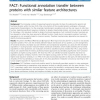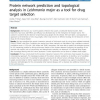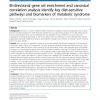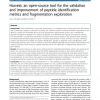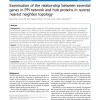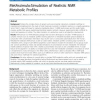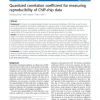BMCBI
2010
13 years 11 months ago
2010
Background: While most multiple sequence alignment programs expect that all or most of their input is known to be homologous, and penalise insertions and deletions, this is not a ...
BMCBI
2010
13 years 11 months ago
2010
Background: The increasing number of sequenced genomes provides the basis for exploring the genetic and functional diversity within the tree of life. Only a tiny fraction of the e...
BMCBI
2010
13 years 11 months ago
2010
Background: Leishmaniasis is a virulent parasitic infection that causes a worldwide disease burden. Most treatments have toxic side-effects and efficacy has decreased due to the e...
BMCBI
2010
13 years 11 months ago
2010
Background: Currently, a number of bioinformatics methods are available to generate appropriate lists of genes from a microarray experiment. While these lists represent an accurat...
BMCBI
2010
13 years 11 months ago
2010
Background: A simple classification rule with few genes and parameters is desirable when applying a classification rule to new data. One popular simple classification rule, diagon...
BMCBI
2010
13 years 11 months ago
2010
Background: There are many important clustering questions in computational biology for which no satisfactory method exists. Automated clustering algorithms, when applied to large,...
BMCBI
2010
13 years 11 months ago
2010
Background: In many protein-protein interaction (PPI) networks, densely connected hub proteins are more likely to be essential proteins. This is referred to as the "centralit...
BMCBI
2010
13 years 11 months ago
2010
Background: Probing the complex fusion of genetic and environmental interactions, metabolic profiling (or metabolomics/metabonomics), the study of small molecules involved in meta...
BMCBI
2010
13 years 11 months ago
2010
Background: Chromatin immunoprecipitation followed by microarray hybridization (ChIP-chip) is used to study protein-DNA interactions and histone modifications on a genome-scale. T...

